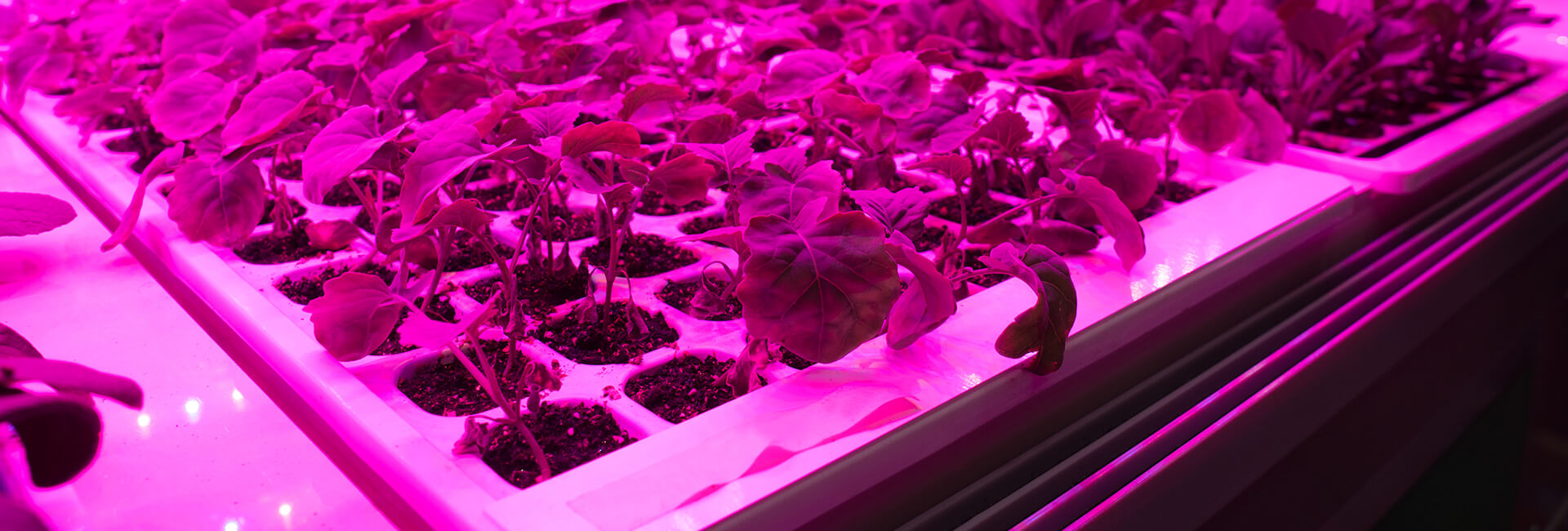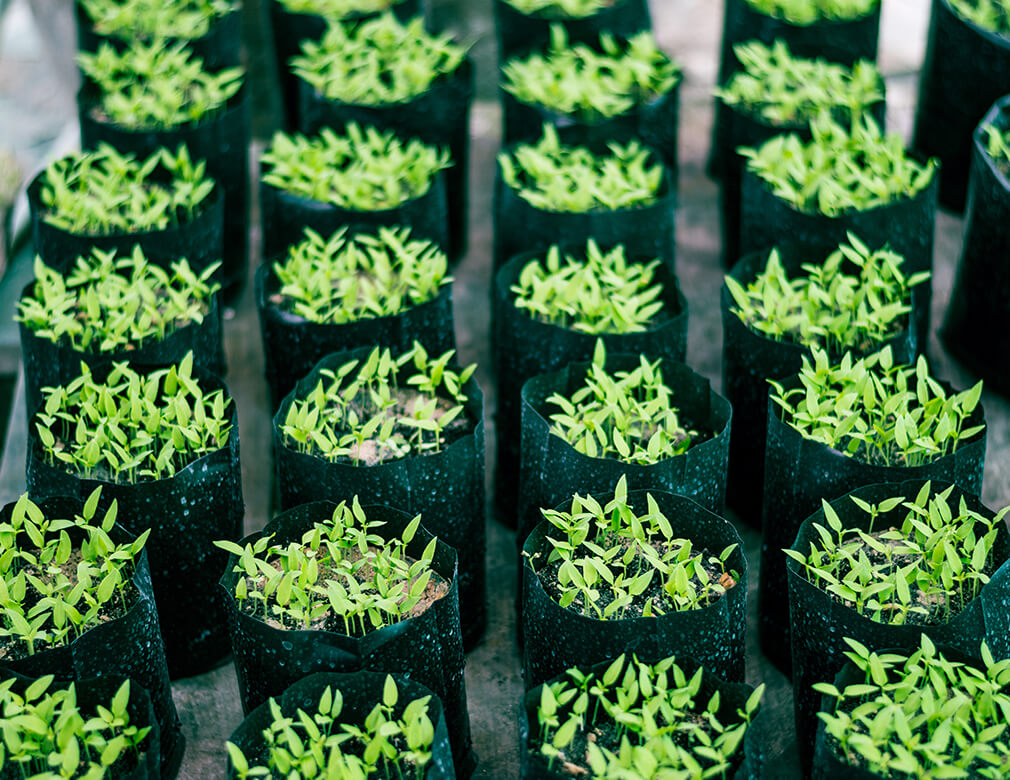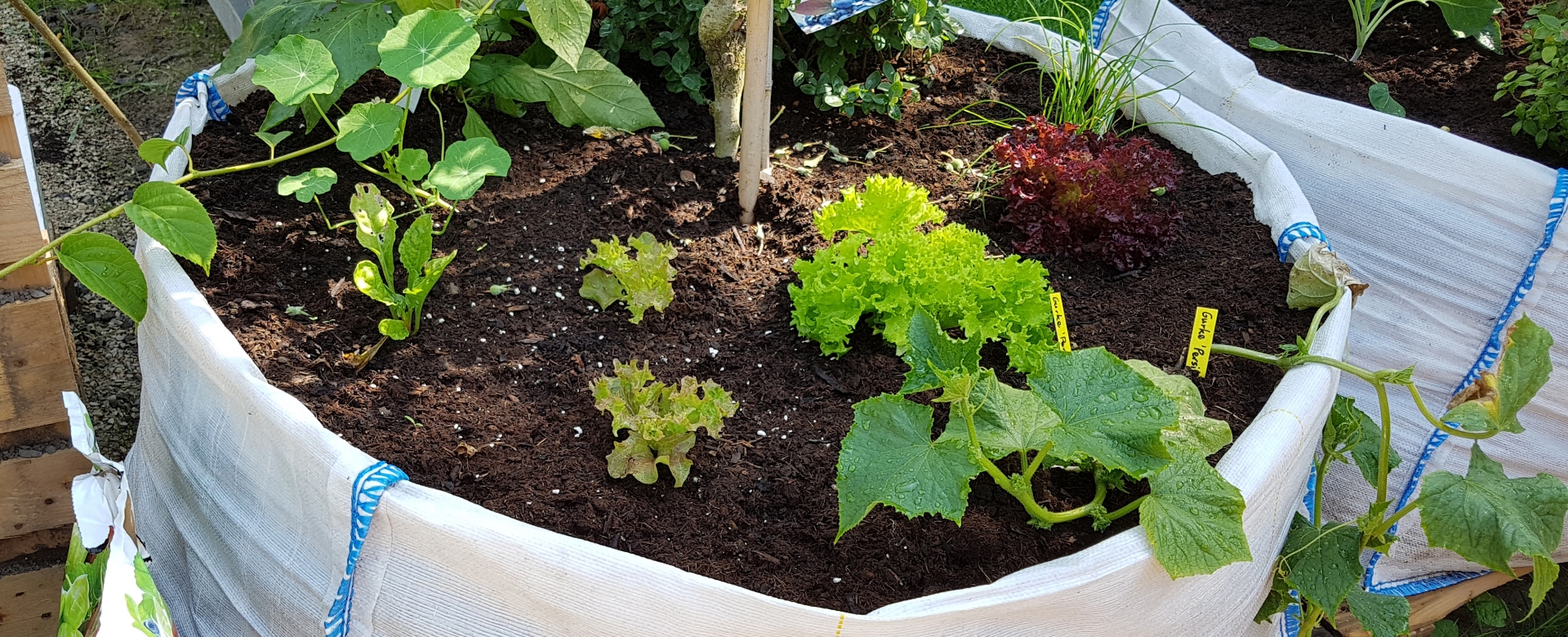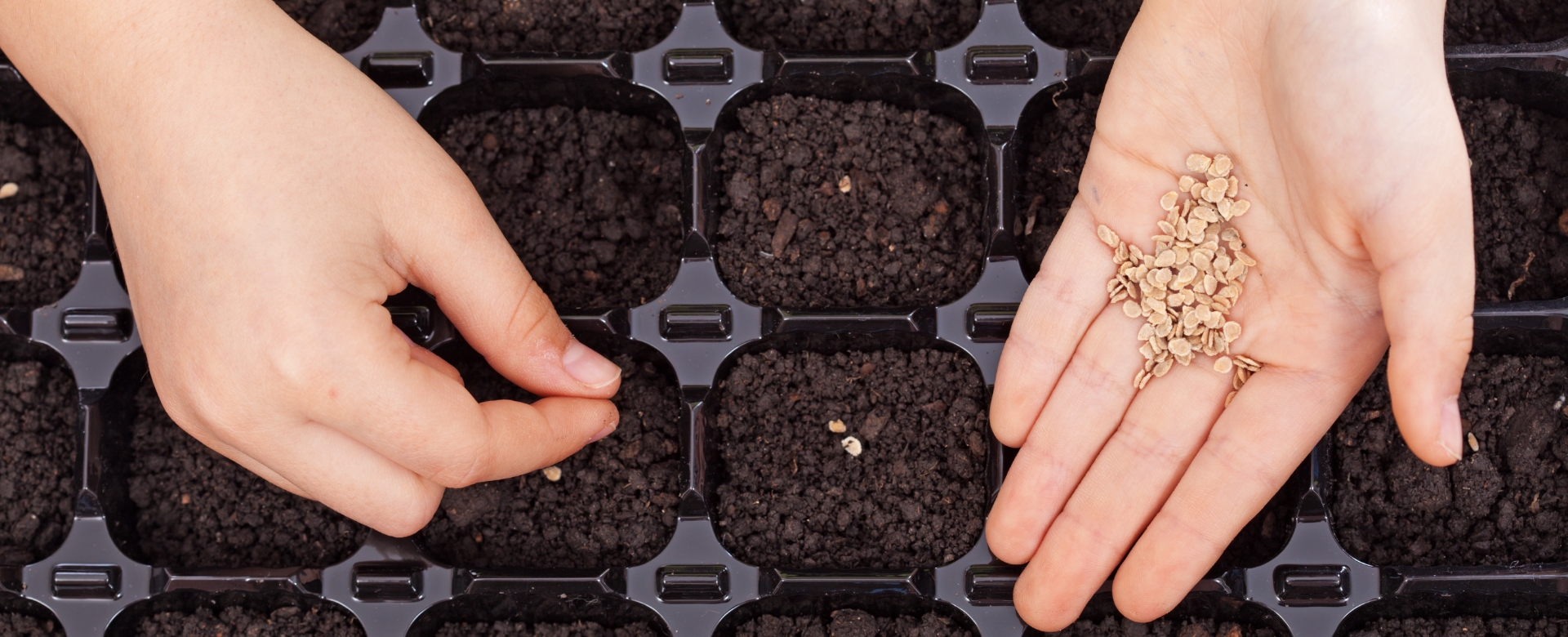Lighting is probably the most important element of a hydroponic grow operation. Choosing the right type of hydroponic lights will ensure your plants grow big, flower and/or produce fruit.
Lights in hydroponic grow rooms stimulate photosynthesis and provide sufficient light for harvest. However, depending on the types of plants you are growing, there are many lighting considerations to make.
Interested in what types of hydroponic lights are best for your grow operation? Today, we’re looking at different types, components of hydroponic light systems, and providing an overview of the length of time your plants need light.
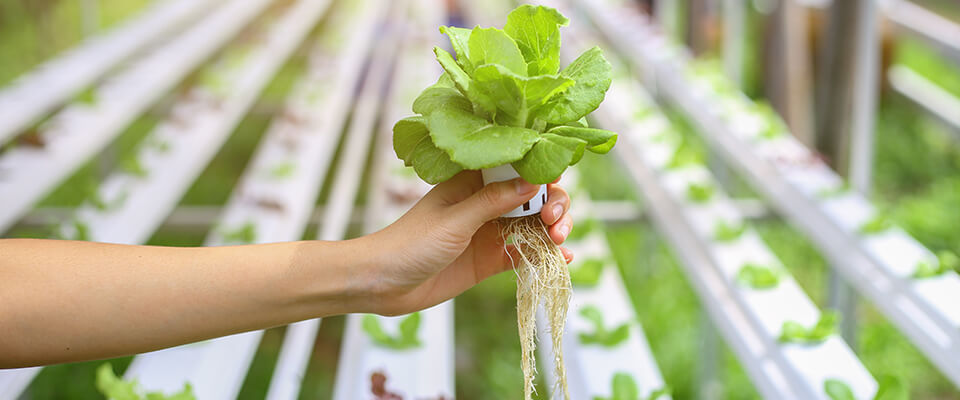
Why Hydroponic Lighting is so Important
Lighting is a crucial component of plant growth.
Photosynthesis—the process by which water and carbon dioxide are changed into the nutrients that plants require to survive: oxygen and glucose—is the only way that plants can grow and generate food.
While light is necessary for all plants to flourish, not all plants require the same kind or amount of light. For example, high-intensity-light plants like tomatoes and peppers require a lot of light to produce fruit. However, when grown indoors, lettuce and spinach are low-intensity-light plants. They require less light to grow.
What Are Hydroponic Grow Lights
Plants require natural light for photosynthesis, and hydroponic grow lights mimic natural sunlight. In other words, they offer a light source that contains the ideal ratio of light wavelengths and intensities for growing plants.
Day length, light color, and light intensity are all included in this. Hydroponic grow lights are designed with both day and night cycles in mind because they are equally vital for plants.
What Kind of Light Does Each Plant Type Require?
An outdoor vegetable garden needs about eight hours of direct sunlight each day. Indoor gardens have similar needs.
A hydroponic garden’s artificial lighting needs should resemble those of direct and indirect sunlight. For annuals, plan at least 14 to 16 hours of artificial lighting, followed by 10 to 12 hours of total darkness. For plants, darkness is just as important as light because, like animals, they require time to rest and metabolize their food.
To get perennial plants through the vegetative (growing) and flowering (production) stages, a stricter calculation for the lighting schedule is necessary. With an automatic electric timer, maintaining a lighting schedule is simpler. They are worthwhile investments because even a minor oversight, like forgetting to turn the lights on or off, can have a significant impact on the development and output of your plants.
Day-Neutral Plants
The lighting requirements for these plants are the most flexible. No matter how much light is present, they still produce fruit. Rice, eggplant, flowers, and corn are a few examples.
It is preferable to compromise on their requirements if you choose to cultivate both short-day and long-day plants in the same growing system. Choose a lighting schedule that is roughly 14 hours long per day.
Long-Day Plants
They need up to 18 hours of direct sunlight each day. Wheat, lettuce, potatoes, spinach, and turnips are a few of them. The long-day cycle replicates the summer flowering plants’ natural habitat.
Short-Day Plants
These need a lot of darkness in order to photosynthesize and develop flowers. They won’t flower if they receive more than 12 hours of light per day. Short-day plants include cannabis, chrysanthemums, strawberries, cauliflower, and poinsettias. For plants that bloom in the spring, the short-day cycle closely resembles the natural environment.
Components of Hydroponic Grow Light Systems
The majority of artificial grow light systems include these components:
- Remote Ballast The light is powered by the ballast, which is a power box. Sometimes ballasts are sold with lamp assemblies; however, they are typically very heavy and hot. For household systems, remote ballasts are significantly superior. The most expensive component of the lighting system must be kept off the ground to prevent it from getting wet in the event of a flood or leak. Due to the requirement that their wattages match, purchasing the ballast and bulb together is advised.
- Reflector Hood A reflective covering that encloses the bulb is called a reflector hood. By reflecting the light down onto the plants at various angles and providing a more effective spread, it improves the effectiveness and efficiency of the bulb. This also enables you to use cooler lighting, saving money on cooling and electricity.
- Lamp This is the focal point and is also referred to as a bulb. The multiple wavelengths of light that plants require for photosynthesis are produced by this component of growing light.
- Timer Despite being the least expensive, they are the most crucial component of the lighting system. They can be either manual or electric, but they must be heavy-duty and grounded (three-prolonged plug). Two plugs are located on either side of the manual timer’s pins, allowing you to simultaneously connect two grow lights.
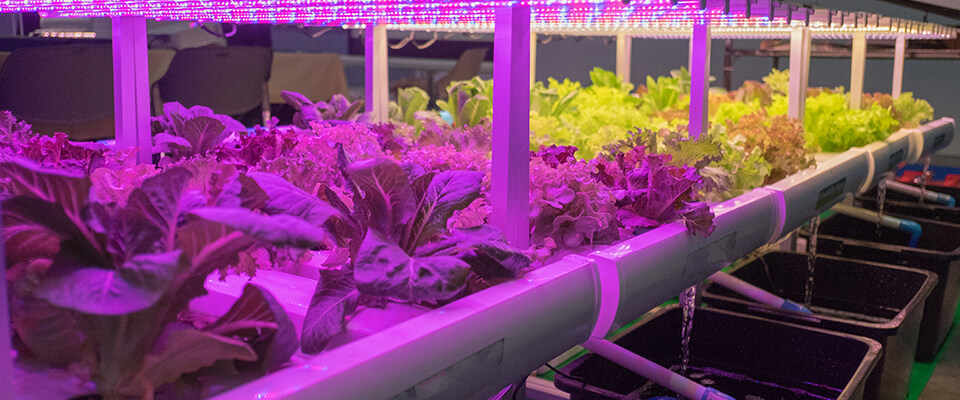
The Various Hydroponic Light Types
There are numerous varieties of hydroponic lights on the market, each with a unique set of benefits and drawbacks. Ultimately, the plants you grow and their needs will determine the type of hydroponic lights you need. Some of the most common types of grow lights for hydroponic systems include:
- High-Intensity (HID) Lights Some of the most popular grow lights available are HIDs. A metal halide and gas-filled arc tube makes up this type of lamp. Intense light is produced when electricity is fed through the arc tube. They are frequently used by commercial growers since they are very effective and generate a lot of light.There are three different types of HID lights:
- Metal Halide (MH)
- Cermaic Metal Halide (CMH)
- High-Pressure Sodium (HPS)
While HPS lights emit a red light spectrum that is suitable for flowering plants, MH lights emit a blue light spectrum that is ideal for vegetative growth. While an HPS light should only be used during the flowering period, CMH and MH lamps can be used for both vegetative growth and flowering.
To control the voltage and current going to the lamp in the majority of HID lights, a ballast is needed. HID lights must be used in conjunction with a cooling system, such as an air-cooled reflector or inline fan, because they generate a lot of heat as well.
Strong all-around light is provided by MH lights. They are beneficial for long-day plants that need more light. They assist newly sprouted plants that are now in the growth or vegetative stages.
The best option for your plants, whether they are in the flowering or fruiting stages, is HPS light. To reduce replacement expenses due to their higher cost, they are frequently used in conjunction with an MH bulb (used during the vegetative state).
HPS bulbs can last up to five years, which is up to twice as long as MH bulbs, although they cost more initially. However, they degrade with usage, just like MH lights, and depending on how much use they receive, they may need to be replaced as frequently as every two years.
- Fluorescent Grow Lights Another well-liked variety of grow light is fluorescent lighting, particularly among home growers. They are perfect for tiny growing operations since they use very little electricity and produce very little heat. For vegetative growth and flowering, fluorescent light can be combined with a HID grow light.Compact fluorescent lights (CFLs) and T5 fluorescent lights are the two types of fluorescent lighting available. Because they are smaller and produce less light, CFLs. T5 fluorescent lights are also frequently utilized in commercial grow operations because of their high efficiency and abundant light output.
- Light-Emitting Diode (LED) Lights One of the most recent types of hydroponic lighting is LED lights. They are the most economical and environmentally friendly types of lighting. Similar to fluorescent lights, LED grow lights are frequently sold in square panels or tubes.They are also evolving as a gold standard in the grow light market due to their benefits. LEDs, for example, have a long lifespan, are very energy-efficient, and produce very little heat. Compared to a HID or fluorescent lamp, an LED fixture has a far longer lifespan of up to 50,000 hours.The ability to focus an LED light on a particular wavelength is one of its main advantages. As a result, you may purchase an LED grow light that delivers the precise light wavelengths that plants require for healthy growth. Red/blue and full-spectrum LED grow lights can be tailored to your individual growing needs.
How to Pick a Hydro Grow Light That Suits Your Needs
Consider the following while selecting the best hydro grow light for your requirements:
- Size of Grow Operation What kind and how many hydroponic lights you require will depend on how big your grow operation is. Small grow operations just require a few LED or fluorescent lights; however, large commercial operations require several HID lights.
- Your Plants Your choice of plants will determine the ideal amount of light. For instance, plants cultivated for their flowers like cannabis or hemp will require a light spectrum with a high concentration of red wavelengths.
- Cost The type and quantity of hydroponic lights you can purchase will depend on your budget. Although HID lights are more affordable than LED or fluorescent lights, they are less effective.However, selecting the best hydroponic lighting system involves more than just choosing the proper kind of light. The amount of light, the length of the light cycle, and the distance between the light and the plants are a few additional elements to consider. To make sure you’re giving your hydroponic plants the best growing conditions, it’s also crucial to do research on them.
Using the Best Hydroponic Lighting Techniques
Observe the following pointers when you set up your hydroponic lighting system:
- Remember that you’ll need to replace your hydroponic bulbs periodically. Hydroponic grow bulbs ultimately burn out and need to be changed, just like any other kind of lamp. On the other hand, LEDs have a long lifespan.
- Adapt the lighting level to the stage of growth. During the vegetative stage, the light’s intensity should rise, reaching its maximum during the flowering phase. This encourages the onset of the change of seasons and helps with your plants’ increased flowering.
- Maintain the proper spacing between your plants and your grow lights. They can burn the leaves if they are too close, and if they are too far away, you will squander energy and your plants’ ability to photosynthesize effectively.
- Install a timer to ensure that your lights come on and go out at the same time every day. Your plants will grow more evenly as a result.
- Installing reflective material or painting your grow room’s walls and ceiling white is an excellent option. This will help the plants receive more light and improve the effectiveness of your lighting system.
- Match your growing medium to your light system. A high-frequency lighting system that gets hot requires soil mediums that retain moisture like coco.
Wrapping Up
Hydroponic lighting can be a lot to wrap your head around, but with the right knowledge and strategy, it doesn’t have to be difficult. Whatever your project entails, proper hydroponic lighting can help you yield excellent results. Need some help? Check out these hydroponic growing tips for more suggestions.
Utilize this guide to gain a better understanding of how hydroponic lighting works as well as what kind of equipment you need to achieve your desired hydroponic goals. With some experimentation, you should be able to power your plants’ growth with great success. Keep this guide handy, and watch as your garden takes off!
Discover our comprehensive online resources to support and enhance your gardening journey. Additionally, we invite you to visit us at Homegrown Outlet, where we can provide further assistance, at one of our convenient locations.

